Scaling from Prototype to High-Volume Injection Molded Part Production
Comments Off on Scaling from Prototype to High-Volume Injection Molded Part Production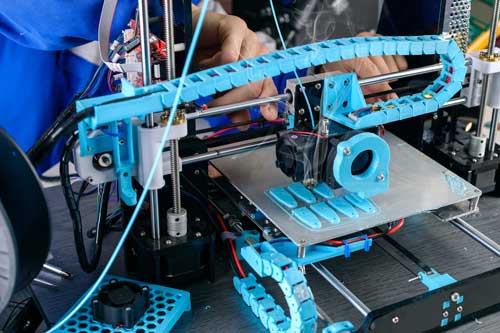 Your prototype is a success. Excellent design, happy customers, and now it’s time to scale. The fun has just begun!
Your prototype is a success. Excellent design, happy customers, and now it’s time to scale. The fun has just begun!
The process of ramping up from a few hundred or thousand parts to hundreds of thousands or millions is where most product teams learn the hardest lessons. Manufacturing at scale takes more than just a few tweaks – it’s a total transformation that brings a whole new set of challenges not seen during the prototype phase. These include tooling, process, quality, and delivery among other critical aspects. Today, we’ll look at the process of ramping up to production runs, the potential pitfalls, and how to avoid them.
The Tooling Reality
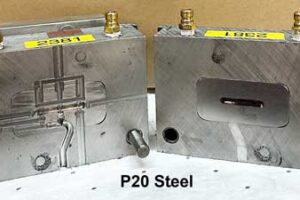 Prototype tooling is perfect for what it’s designed for: short runs and design flexibility. But things like aluminum molds, 3D fixtures, and soft tooling can’t handle the demands of production runs. Imagine if you are starting with 10,000 parts a year, and run 500 cycles per month. If you go to a million parts annually, you’re now at 5,000+ cycles per month. Your aluminum mold will be shot in three months, instead of three years.
Prototype tooling is perfect for what it’s designed for: short runs and design flexibility. But things like aluminum molds, 3D fixtures, and soft tooling can’t handle the demands of production runs. Imagine if you are starting with 10,000 parts a year, and run 500 cycles per month. If you go to a million parts annually, you’re now at 5,000+ cycles per month. Your aluminum mold will be shot in three months, instead of three years.
You’ll need to upgrade to hardened steel tooling to get the job done. But design upgrades will certainly be required. For instance, cycle times will change due to different thermal properties. Your draft angles will likely need reconsideration. Often, ones that work in soft tooling, can cause ejection problems. Tighter tolerances will create additional challenges as well. We strongly recommend that you use mold flow analysis at this phase to help mitigate these types of issues once those production lines are running.
Process Validation Demands
The mindset now must shift from “it works” to “it always works”. With shorter runs, you are able to inspect everything. But when you scale to, say, a million parts, you’re producing 4,000 parts per day. Individual part inspection becomes a challenge. While it can be done through in-line machine vision systems, quality must be built into every phase of the process.
Ironically, scale itself becomes a threat to quality. Your job will require more people, going from a few trained technicians to dozens of operators across multiple shifts. Consider working with a supplier that has automation capabilities to help reduce the labor and associated costs, while shortening lead times.
Production runs now require 100x more material from multiple lots and/or material suppliers. The problem? Batch-to-batch differences will drive defects. Be sure to work with an injection molding shop that works with trusted and proven suppliers and has already tackled this challenge.
Demand Traceability!
Prototype calipers will no longer cut it. The days of receiving parts in boxes with simple packing slips are over. You’ll now require detailed quality documentation and lot traceability. This means you know the source of the material, when it was made, and many other variables that drive production and ultimately, quality. Without this, it becomes almost impossible to get to the root of a defect issue and resolve it.
When working with your supplier, make sure you clearly define the following:
- Exactly what will be inspected, and how often
- What specific documentation will be included. Typical docs include certifications of conformance, dimensional reports, material certifications, etc.
- How are parts serialized or lot-tracked? This is a critical aspect to understand.
- How are defects communicated and contained? Is there a documented process in place that gets to the source of the issue, and works with all involved, including the customer, to resolve it?
It Takes Longer Than You Think
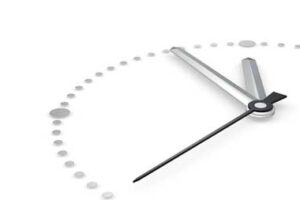 One of the biggest sources of frustration when ramping up is the time it takes to successfully scale from prototype to production. While it can happen quicker, it’s not unusual for it to take up to 24 months to do. Steps such as tooling design, production and testing will likely take several months. Then you’ll need to budget time for tool sampling, iterations, and first article inspection. It takes time to design and produce the molds. Teams that attempt to shortcut this process often sacrifice proper process validation, deal with single-source vulnerabilities, and may end up with expensive design changes.
One of the biggest sources of frustration when ramping up is the time it takes to successfully scale from prototype to production. While it can happen quicker, it’s not unusual for it to take up to 24 months to do. Steps such as tooling design, production and testing will likely take several months. Then you’ll need to budget time for tool sampling, iterations, and first article inspection. It takes time to design and produce the molds. Teams that attempt to shortcut this process often sacrifice proper process validation, deal with single-source vulnerabilities, and may end up with expensive design changes.
Be Prepared
There is a smarter way to do this. Engaging production molding expertise during the prototype phase will pay off in the long run. Your goal is to design for production tooling from day one. Getting the draft angles, gate locations, and wall thicknesses right early on means you won’t need to redo the work. Also, try to establish your critical dimensions and statistical requirements early on. And before fully ramping up, insist on production-rate validation trials. These considerations will make it much easier to ramp up at go time.
The difference between manufacturers that will scale well versus those that struggle to do so isn’t a matter of luck. It takes preparation. Designing your product and process for long runs from inception will pay dividends in the long run.
One final thought. When working with an experienced injection molder, think of us as your manufacturing partner, not just another vendor. We can tell you for sure that companies that work collaboratively with us from the beginning scale successfully. The formula here is simple (if not cliché): the customer’s success is in fact our success!


 Process validation and documentation – establish processing windows through designed experiments rather than relying on trial-and-error approaches. Document validated parameters thoroughly and implement controls to maintain consistency across different operators and shifts.
Process validation and documentation – establish processing windows through designed experiments rather than relying on trial-and-error approaches. Document validated parameters thoroughly and implement controls to maintain consistency across different operators and shifts.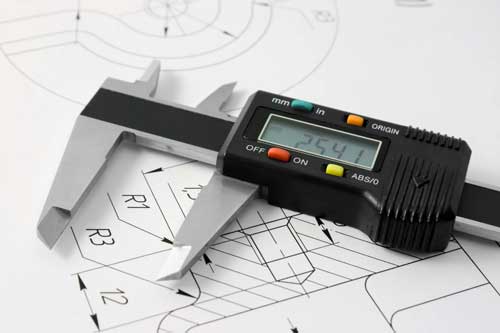
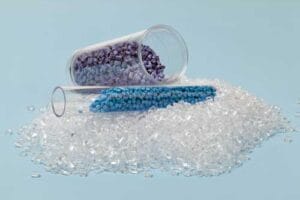 Application and environmental considerations go hand in hand. The components must be designed to withstand whatever threats they may be up against such as extreme temperatures, force, and chemical or UV exposure. Parts exposed to UV rays will definitely require specialty UV-stabilized materials, while having thicker sections will also help them maintain mechanical properties over time. For industrial applications, chemical resistance is often a critical factor. While food-grade components require specific material selections as well as surface finishes, with the goal of minimizing contamination.
Application and environmental considerations go hand in hand. The components must be designed to withstand whatever threats they may be up against such as extreme temperatures, force, and chemical or UV exposure. Parts exposed to UV rays will definitely require specialty UV-stabilized materials, while having thicker sections will also help them maintain mechanical properties over time. For industrial applications, chemical resistance is often a critical factor. While food-grade components require specific material selections as well as surface finishes, with the goal of minimizing contamination. Design for manufacturability, where parts are optimized against manufacturing complexity, cost and time, extends beyond basic moldability. Key considerations include:
Design for manufacturability, where parts are optimized against manufacturing complexity, cost and time, extends beyond basic moldability. Key considerations include: Today’s design for injection molding increasingly incorporates automation to help reduce labor costs and improve part consistency, quality and turn-time. Parts designed for robotic handling also benefit from specific grip features, balanced geometry for stable handling, and consistent orientation features.
Today’s design for injection molding increasingly incorporates automation to help reduce labor costs and improve part consistency, quality and turn-time. Parts designed for robotic handling also benefit from specific grip features, balanced geometry for stable handling, and consistent orientation features.
 Beginning with its inception 150 years ago, plastic injection molding has grown to become an indispensable method for producing countless components from raw plastic. Although the basics remain largely the same since that time, the industry has seen the technology evolve, particularly in recent decades. These days, parts can be made much quicker and more precisely than ever before. In this blog, we’ll look at the advancements in plastic injection molding.
Beginning with its inception 150 years ago, plastic injection molding has grown to become an indispensable method for producing countless components from raw plastic. Although the basics remain largely the same since that time, the industry has seen the technology evolve, particularly in recent decades. These days, parts can be made much quicker and more precisely than ever before. In this blog, we’ll look at the advancements in plastic injection molding.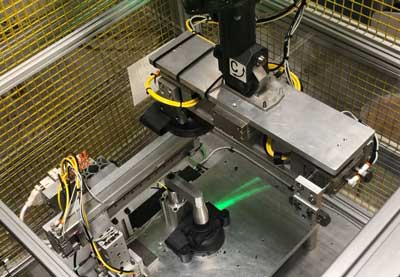 Automation – is another key driver of molding which aids in managing complex assemblies and multi-step processes. For instance, robotic systems can now handle precise insert placement, part removal, and secondary operations with incredible accuracy.
Automation – is another key driver of molding which aids in managing complex assemblies and multi-step processes. For instance, robotic systems can now handle precise insert placement, part removal, and secondary operations with incredible accuracy.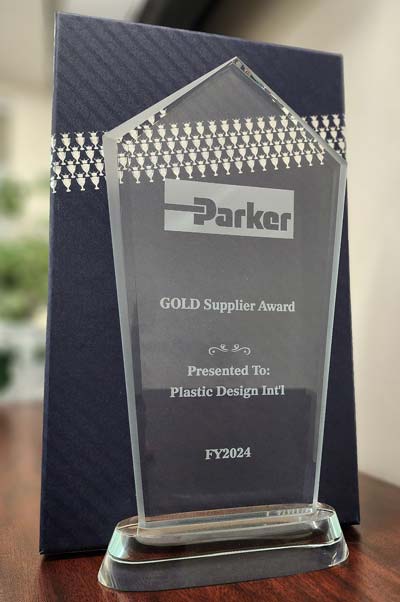
 Often, the difference between a properly functioning part and one that fails prematurely comes down to tiny fractions. With plastic injection molding this principle is illustrated by tolerances. Controlling tolerances in injection molding isn’t just about hitting the required spec. It’s much more than that. It’s about making sure the end part is reliable, compatible for assembly, and ultimately it will not cause the end product to prematurely fail. In this blog, we’ll explore the concept of tolerances in injection molding.
Often, the difference between a properly functioning part and one that fails prematurely comes down to tiny fractions. With plastic injection molding this principle is illustrated by tolerances. Controlling tolerances in injection molding isn’t just about hitting the required spec. It’s much more than that. It’s about making sure the end part is reliable, compatible for assembly, and ultimately it will not cause the end product to prematurely fail. In this blog, we’ll explore the concept of tolerances in injection molding.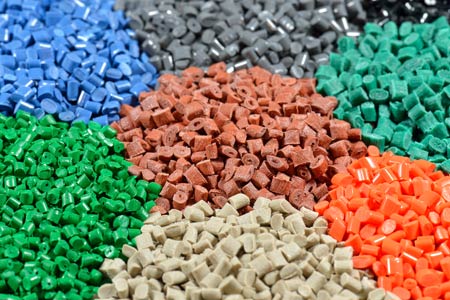
 The changing conditions in the global marketplace have manufacturers reconsidering just about everything, particularly their supply chains. Whie this environment can be challenging, the goal remains simple: to continue to maximize profit and efficiency, while minimizing risk. Tariffs in particular have placed urgency on these considerations. But the case for reshoring your plastic injection molded parts goes beyond uncertain economic policies. Today, we’ll lay out a plan for your plastic part sourcing, regardless of tariff outcomes.
The changing conditions in the global marketplace have manufacturers reconsidering just about everything, particularly their supply chains. Whie this environment can be challenging, the goal remains simple: to continue to maximize profit and efficiency, while minimizing risk. Tariffs in particular have placed urgency on these considerations. But the case for reshoring your plastic injection molded parts goes beyond uncertain economic policies. Today, we’ll lay out a plan for your plastic part sourcing, regardless of tariff outcomes. Bringing Injection Molding Home
Bringing Injection Molding Home  Today, manufacturers are constantly looking for effective ways to reduce costs while improving product performance and production efficiency. One way to achieve this is by shifting from traditional metal parts to thermoplastic ones.
Today, manufacturers are constantly looking for effective ways to reduce costs while improving product performance and production efficiency. One way to achieve this is by shifting from traditional metal parts to thermoplastic ones. Along with the advantages listed above, there are some potential drawbacks that must be considered. Selecting the material that meets the performance requirements of the application is crucial – since thermoplastics vary in their properties and performance characteristics.
Along with the advantages listed above, there are some potential drawbacks that must be considered. Selecting the material that meets the performance requirements of the application is crucial – since thermoplastics vary in their properties and performance characteristics.